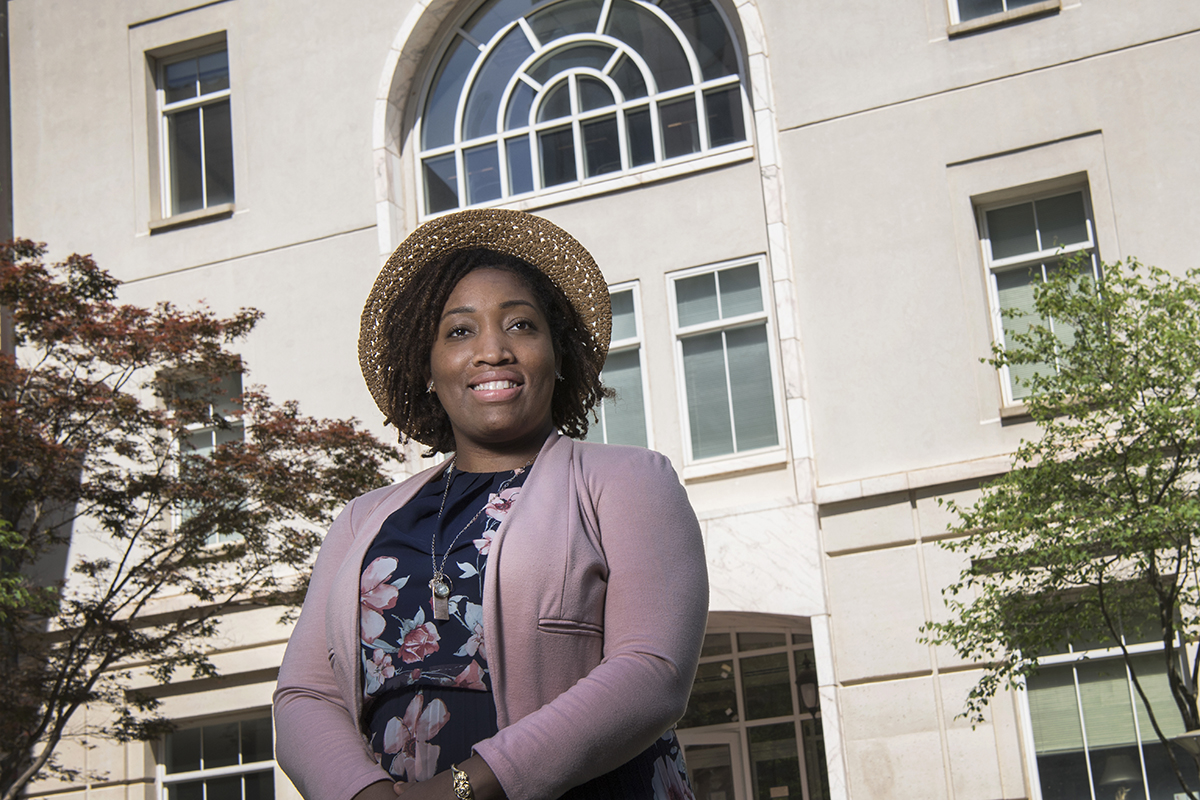Reducing Risks of Maternal Mortality

For nurse-midwife Alexis Dunn Amore 09MSN 17PhD, the social determinants of health (SODH) are ingrained in her soul. She encounters these factors when caring for pregnant Black women. She studies a variety of physiologic and social risk factors that increase the population’s disproportionately high rate of maternal mortality. Additionally, she explores these factors more intimately in a community support group for new moms and in classes with Emory nursing students.
Amore, an assistant research professor, is currently working on a project with Dean Linda McCauley 79MN to develop a web-based platform to address maternal mortality risk. It’s being developed as a user-friendly resource to help new mothers and their infants stay healthy. The project is supported with funding from the Woodruff Health Sciences Center at Emory.
“When a mom and her baby are discharged home, we instruct them to call their provider if they develop X,Y,Z symptoms,” says Amore, who practices at the Atlanta Birth Center. “If a new mom is sitting at home, and her chest starts to hurt and she’s just had a baby, this platform would allow her to go to our website and click through their symptoms. It would give them the option of following up with their provider and generate a PDF to take with them. We’re creating this platform to provide them with more accessible resources.”
Amore is also using Project NeLL, the School of Nursing’s new data science platform, to collect and analyze information on the SDOH. Working with researchers from Rollins School of Public Health, she is incorporating data into the tool utilizing information available from analyses of state birth records and discharge data for Georgia mothers. The team is also mining the US Census Bureau’s American Community Survey to gather SDOH data on women who live in certain parts of Georgia. Amore will use this information to look at health risks based on where women live. In yet another analysis, Amore will examine specific SDOH factors such as transportation.
Her research dovetails with Professor Jill Hamilton’s initiative to incorporate the SDOH throughout the School of Nursing curriculum. During a recent guest lecture to nursing students, Amore spoke about the high rates of preeclampsia, preterm birth, and maternal mortality among Black women. Georgia’s maternal death rate is the highest in the country. Black women in the state are twice as likely to die after giving birth than white women.
As she told students, “I don’t want you to leave class thinking it’s about the color of someone’s skin. I want you to understand the social factors around it.”
Such discussions can make students feel uncomfortable, Amore admits. “It’s important for them to examine the lens where they’re coming from to better understand the social factors that affect people who don’t look like them. You have to take the conversation inward and then take the conversation outward to help the patients you are caring for.”






